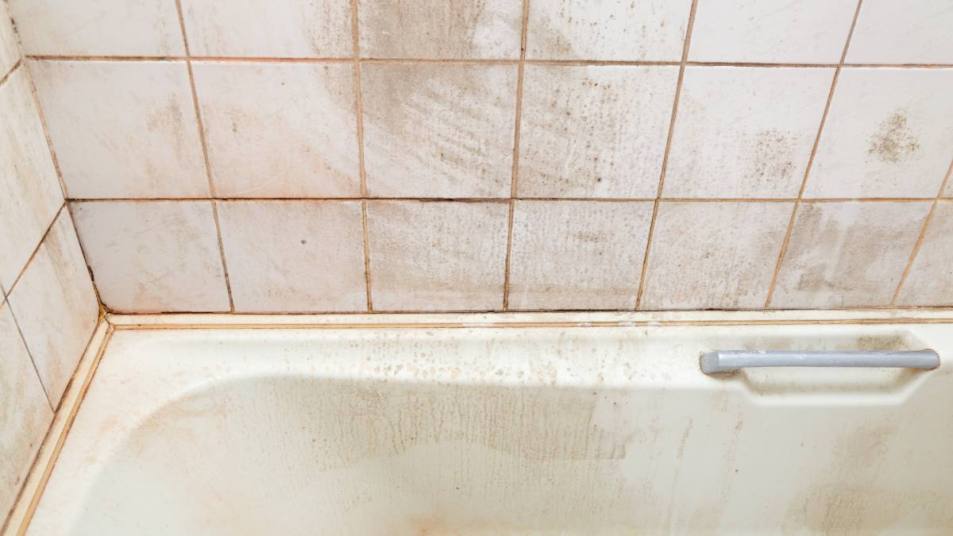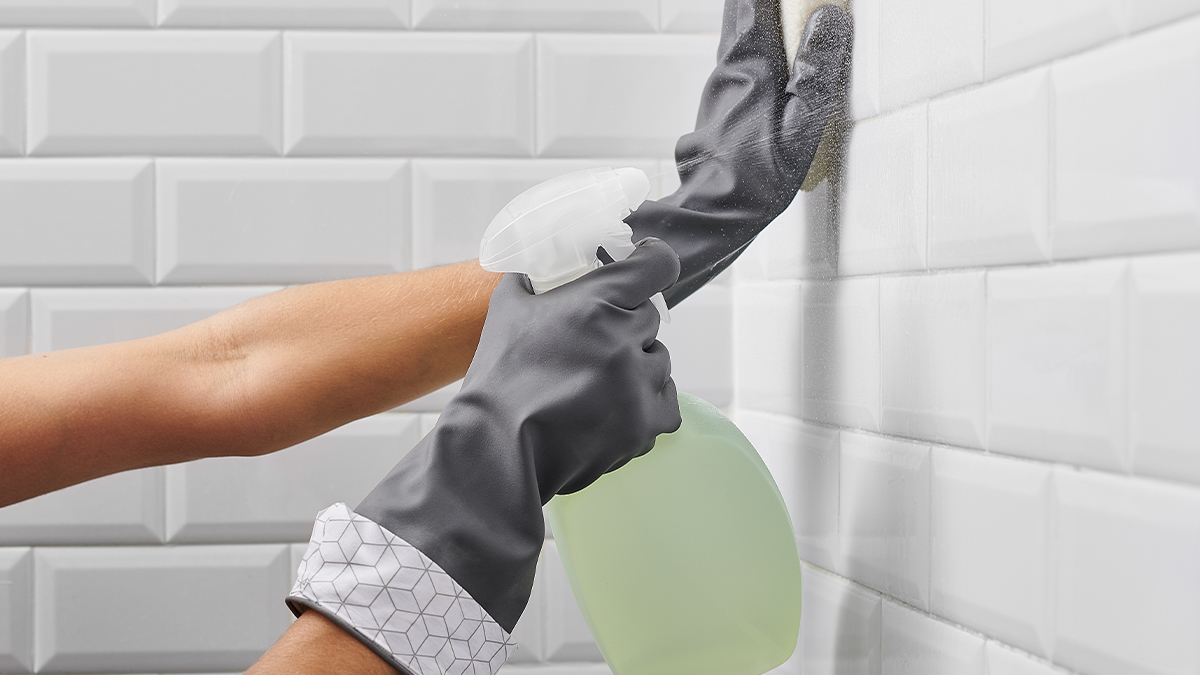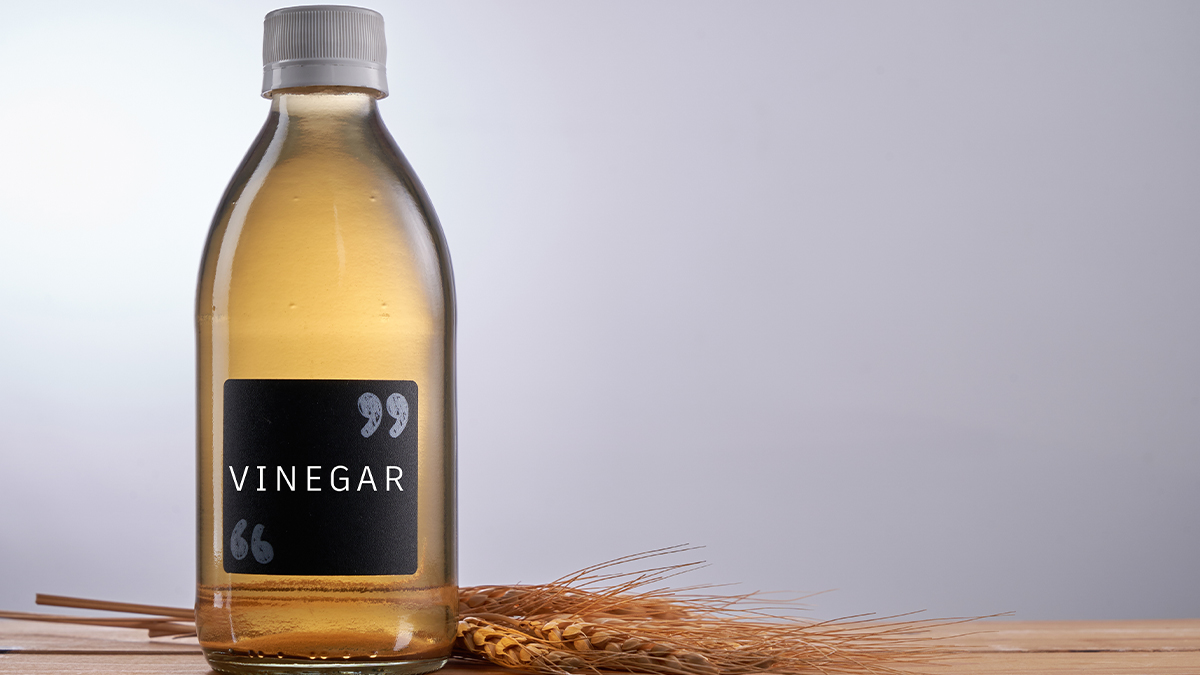Is Pink Mold in the Shower Dangerous? Mold Experts Weigh In + How To Clean It With Ease
The genius Vaseline trick that will prevent it from coming back!

If you’re like us, you’ve been scrubbing your bathroom clean for years and you’ve seen it all: soap scum, black mold, yellow stains. But lately, a pink grime has been showing up in your shower’s grout and drain and it has you stumped. You’ve heard about pink mold, but you’re not quite sure if it’s something you should be concerned about. You know that certain molds can be a health problem, but is pink mold in the shower dangerous? Read on to find out.
What is pink mold and what causes pink mold in shower?
“Most people refer to this as ‘pink mold,’ but that’s not entirely accurate,” says Milan Antonic, mold remediator and air quality expert for Air Purifier First. “Pink ‘mold’ is actually a bacterium, technically known as Serratia marcescens,” he explains. “The pink or sometimes orange-red color you see is from a pigment called prodigiosin that the bacterium produces, and it’s particularly fond of gathering in grout and shower corners.” The reason pink mold forms in the showers is because it loves damp environments and likes to eat fatty substances and phosphorus — two materials commonly found in soap residue and body oils, Antonic adds.
Is pink mold in the shower dangerous?
For the most part, when asked if pink mold in shower is dangerous, mold experts say it’s considered harmless, but scientists are finding it can be a concern for certain people. “While rare, pink mold can cause urinary tract, respiratory tract and wound infections, mainly in immunocompromised individuals,” cautions Kevin Geick, of Bio Recovery nationwide mold remediation company, adding that that those at risk may include the chronically ill.
Another factor to consider, according to Geick: If your home has a damp enough environment for pink mold to consistently develop in your shower, there’s a chance you could also be growing things like Stachybotrys chartarum (a.k.a., black mold), Cladosporium, Penicillium and Alternaria — all common household molds that can cause respiratory issues, allergies and other health concerns.
In fact, “over 50 percent of the American population suffers from mold sensitivity,” explains air quality expert Michael Rubino. “One in four family members in most homes are experiencing adverse health reactions in their own home and don’t even know the cause may be mold.” (Click through to learn more about the symptoms of mold exposure.) And you don’t need to be allergic to mold in order to have an immune response to it, explains Rubino. Bottom line: While pink mold may not make you seriously ill, it’s also not something you want living rent-free in your home.
To prevent pink mold from forming in the shower
The first rule of pink mold is to keep the bacteria from forming in the first place. Curbing its growth also means you’ll be preventing other, more dangerous molds from forming.
You just want to make sure your shower is inhospitable to mold, says Muffetta Krueger, who has more than 15 years of experience battling the stuff as a professional house cleaner and owner of Muffetta’s Domestic Assistants.
“Keep your shower dry and well-ventilated — pink mold needs dampness to thrive, so running your bathroom exhaust fan or opening a window after showering can keep humidity levels low,” she says. “After bathing, dry off shower doors and walls using a squeegee or towel, which will also help cut down on the soap scum and residue pink mold feeds on.”
Does water tend to linger in your shower? Sometimes small amounts of water —which pink mold thrives on — collects and sit in the area around your shower drain. While it can be tough to keep this area totally dry, you can create a water-resistant barrier around your drain with a nifty Vaseline trick. The water just slides right off. And as YouTube cleaning pro Andrea Jean shares in the video below, it also helps remove some of the pink mold as you apply it.
Check out her easy how-to (skip to about the 2:00 mark) here:
3 effective ways to remove pink mold from the shower
Since pink mold in the shower may be dangerous for some, if it’s already garnishing your shower tiles, just be sure to take a few simple safety precautions before cleaning, cautions Michael Golubev, Mold Busters CEO. “Grab a pair of rubber gloves and wear a mask like an N95, because you don’t want pink mold coming in contact with your skin — especially if you have unhealed cuts or wounds,” he says. “The act of cleaning may send some pink mold molecules airborne, so the mask will help you avoid breathing them in.” Once you’re gloved up and masked up, try one of the following cleaning strategies depending on what you have on hand:
1. To clean pink mold in the shower with bleach

As a powerful antibacterial, bleach is ideal if you’ve got a real pink mold issue going on in your shower.
“In a spray bottle, combine 1 part bleach to 10 parts water, and soak the area,” says Golubev. “Let it sit about 10-15 minutes, then scrub it with a sponge. Make sure all traces of pink are gone, then rinse and dry the surface.”
If the pink mold is growing on your grout, it can take a little more power to eliminate — this is because grout is porous, so the bacteria can form deeper channels. In this case, simply make a paste using equal parts bleach and baking soda, pack it over the grout and allow it to sit for 30 minutes to an hour, then scrub using a grout scrubber such as the Coastwide Professional™ 9″ Grout Brush, (Buy from Staples, $1.79) or the Scotch-Brite Gout Brush, (Buy from Target, $3.79) or a toothbrush, rinse and let dry.
However, take note that some experts caution against asing baking soda and bleach for mold and suggest this $2 toilet bowl cleaner instead.
2. To clean it with white vinegar

Bleach isn’t the only antibacterial powerhouse for tackling pink mold. Steve Evans, owner of Memphis Maids, also recommends white vinegar.
“Just fill a bottle with a ratio of one-part white vinegar to one part dish soap. Spray the area with the pink mold thoroughly, then use a stiff brush to scrub the spot and really work the mixture in.” Let sit for an hour before rinsing and drying, and the pink should be completely gone.
3. To clean pink mold in the shower with hydrogen peroxide
You can also turn to your first aid cabinet to banish the bacteria, says Alessandro Gazzo, who works for Emily’s Maids. “First, use a squirt of dish soap and hot water to scrub the area and get rid of surface dirt. Then spray with undiluted 3% hydrogen peroxide, let sit for 15 minutes and rinse. Hydrogen peroxide kills bacteria and pathogens — that’s why it’s a first-aid staple — and will work just as well on the bacteria that forms pink mold.”
Hydrogen peroxide also makes an effective pink mold preventive: simply spray it over your shower after each use, or pour it down the drain, as seen in Angela Brown Cleaning‘s video here:
For more on bathroom cleaning, click through the links below!
Remove Mold and Mildew From Bathroom Corner Tiles With Toilet Paper
5 Easy Bathroom Cleaning Hacks to Remove Mildew, Stop Soap Scum, and More












